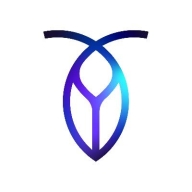

CockroachDB and Amazon Aurora are competitors in the cloud-based database management market. CockroachDB excels in distributed systems with its adaptable architecture, while Amazon Aurora shines with seamless AWS integration and strong multi-region deployment capabilities.
Features: CockroachDB offers high fault-tolerance, simple installation, and a distributed nature which allows geo-partitioning for enhanced data residency control, speed, and resiliency. Key features also include node syncing and automatic rebalancing. Amazon Aurora is noted for its robust scalability, auto-scaling, SQL standardization, and seamless AWS integration. It supports multi-region clusters, provides distinct endpoints for read and write operations, and offers continuous backups.
Room for Improvement: CockroachDB can enhance disaster recovery and failover features, improve PostgreSQL compatibility, and clarify serverless offerings. Its pricing and initial setup could also be more user-friendly. Amazon Aurora faces criticism for costliness. Enhancements in cryptography, standalone solutions, query performance insights, and integration with Oracle are needed. Predictability in update release patterns could improve user experience.
Ease of Deployment and Customer Service: CockroachDB supports both public and on-premises deployments, offering more flexibility for on-premise setups despite mixed reviews on technical support. Amazon Aurora operates primarily on cloud platforms supported by AWS infrastructure, excelling in AWS integration but requiring customer service improvements.
Pricing and ROI: CockroachDB's open-source cost model is seen as affordable, offering flexibility with a good return on investment, although some premium offerings are seen as costly. Amazon Aurora's managed service benefits reflect in its pricing, providing cost-effectiveness due to performance and AWS features, but price fluctuations based on usage and performance suggest potential for cost optimization.
Using Amazon Aurora has saved us significantly in terms of manpower costs, with nearly fifty percent savings compared to an on-premises solution.
Technical support from Amazon is rated very highly.
The initial support could improve by having engineers familiarize themselves with the issue content to provide more specialized assistance from the start.
The issue was resolved efficiently.
This scalability is critical as it allows for runtime expansion, which is essential for businesses moving from on-premises to the cloud.
It offers a stable environment, ensuring consistent performance.
There are technical challenges, such as the inability to provision the database using a PostgreSQL snapshot directly.
Keeping extensions up-to-date with PostgreSQL releases would enhance Aurora's functionality.
I used the backup options in Amazon Aurora for cloning databases. It's very common.
For multi-region deployment, CockroachDB requires at least three plus replicas across data centers to achieve strong consistency across regions, which increases infrastructure costs including compute, storage, and networking.
The pricing for Amazon Aurora is different from DocumentDB because DocumentDB is cheaper.
The pricing is reasonable and not overly expensive.
Amazon Aurora is not very expensive as other solutions with similar features from other vendors come at almost the same cost.
It replicates data across multiple Availability Zones, ensuring high availability and geographical redundancy, which can be considered a GR instead of a DR.
Amazon Aurora offers a 99.9% SLA compared to PostgreSQL. This ensures a high level of availability for our applications.
CockroachDB's geo-distribution feature is superior to traditional databases.
| Product | Market Share (%) |
|---|---|
| Amazon Aurora | 2.7% |
| CockroachDB | 4.1% |
| Other | 93.2% |


| Company Size | Count |
|---|---|
| Small Business | 5 |
| Midsize Enterprise | 4 |
| Large Enterprise | 13 |
| Company Size | Count |
|---|---|
| Small Business | 7 |
| Midsize Enterprise | 1 |
| Large Enterprise | 5 |
Amazon Aurora is a MySQL and PostgreSQL-compatible relational database built for the cloud, that combines the performance and availability of traditional enterprise databases with the simplicity and cost-effectiveness of open source databases.
Amazon Aurora is up to five times faster than standard MySQL databases and three times faster than standard PostgreSQL databases. It provides the security, availability, and reliability of commercial databases at 1/10th the cost. Amazon Aurora is fully managed by Amazon Relational Database Service (RDS), which automates time-consuming administration tasks like hardware provisioning, database setup, patching, and backups.
Amazon Aurora features a distributed, fault-tolerant, self-healing storage system that auto-scales up to 64TB per database instance. It delivers high performance and availability with up to 15 low-latency read replicas, point-in-time recovery, continuous backup to Amazon S3, and replication across three Availability Zones (AZs).
Visit the Amazon RDS Management Console to create your first Aurora database instance and start migrating your MySQL and PostgreSQL databases.
Cockroach Labs is the creator of CockroachDB, the cloud-native, resilient, distributed SQL database enterprises worldwide trust to run mission-critical AI and other applications that scale fast, avert and survive disaster, and thrive everywhere. It runs on the Big 3 clouds, on prem, and in hybrid configurations powering Fortune 500, Forbes Global 2000, and Inc. 5000 brands, and game-changing innovators, including OpenAI, CoreWeave, Adobe, Netflix, Booking.com, DoorDash, FanDuel, Cisco, P&G, UiPath, Fortinet, Roblox, EA, BestBuy, SpaceX, Nvidia, the USVA, and HPE. Cockroach Labs has customers in 40+ countries across all world regions, 25+ verticals, and 50+ Use Cases. Cockroach Labs operates its own ISV Partner Ecosystem powering Payments, Identity Management (IDM/IAM), Banking & Wallet, Trading, and other high-demand use cases. Cockroach Labs is an AWS Partner of the Year finalist and has achieved AWS Competency Partner certifications in Data & Analytics and Financial Services (FSI). CockroachDB pricing is available at https://www.cockroachlabs.com/pricing/
Vector, RAG, and GenAI Workloads
CockroachDB includes native support for the VECTOR data type and pgvector API compatibility, enabling storage and retrieval of high-dimensional embeddings. These vector capabilities are critical for Retrieval-Augmented Generation (RAG) pipelines and GenAI workloads that rely on similarity search and contextual embeddings. By supporting distributed vector indexing within the database itself, CockroachDB removes the need for external vector stores and allows AI applications to operate against a single, consistent data layer.
C-SPANN Distributed Indexing
At the core of CockroachDB’s vector search capabilities is the C-SPANN indexing engine. C-SPANN provides scalable approximate nearest neighbor (ANN) search across billions of vectors while supporting incremental updates, real-time writes, and partitioned indexing. This ensures low-latency retrieval in the tens of milliseconds, even under high query throughput. The algorithm eliminates central coordinators, avoids large in-memory structures, and leverages CockroachDB’s sharding and replication to deliver scale, resilience, and global consistency.
Machine Learning and Apache Spark Integration
CockroachDB integrates with modern ML workflows by supporting embeddings generated through frameworks such as AWS Bedrock and Google Vertex AI. Its compatibility with the PostgreSQL JDBC driver allows seamless integration with Apache Spark, enabling distributed processing and advanced analytics on CockroachDB data.
PostgreSQL Compatibility and JSON Support
CockroachDB speaks the PostgreSQL wire protocol, so applications, drivers, and tools designed to work with Postgres can connect to CockroachDB without modification, enabling seamless use of familiar SQL features and integration with the wider Postgres ecosystem. This includes support for advanced data types such as JSON and JSONB, which allow developers to store and query semi-structured data natively.
Geospatial and Graph Capabilities
CockroachDB also provides first-class geospatial data support, allowing developers to store, query, and analyze spatial data directly in SQL. For graph workloads, CockroachDB employs JSON flexibility to represent relationships and delivers query capabilities for graph-like traversals. This combination enables hybrid applications that merge relational, geospatial, document, and graph data within a single platform.
Analytics, BI, and Integration
To support high-performance analytics and BI, CockroachDB supports core analytical use cases and functions including Enterprise Data Warehouse, Lakehouse, and Event Analytics, and offers materialized views for precomputing complex joins and aggregations. Its PostgreSQL wire compatibility ensures direct connectivity with all relevant BI and analytics apps and tools including Amazon Redshift, Snowflake, Kafka, Google BigQuery, Salesforce Tableau, Databricks, Cognos, Looker, Grafana, Power BI, Qlik Sense, SAP, SAS, Sisense, and TIBCO Spotfire. Data scientists can interact with CockroachDB through Jupyter Notebooks, querying structured and semi-structured data and loading results for analysis. Change data capture (CDC) streams provide real-time updates to analytics pipelines and feature stores, keeping downstream systems fresh and reliable. Columnar vectorized execution accelerates query processing, optimizes transactional throughput, and minimizes latency for demanding distributed workloads.
MOLT AI-Powered Migration
Organizations often know their data infrastructure is not supporting the business, but find it too painful to change. CockroachDB’s MOLT (Migrate Off Legacy Technology) is designed to enable safe, minimal-downtime database migrations from legacy systems to CockroachDB. MOLT Fetch supports data migration from PostgreSQL, MySQL, SQL Server, and Oracle, with SQL Server and DB2 coming soon. CockroachDB also has a portfolio of data replication platform integrations including Precisely, Striim, Qlik, Confluent, IBM, etc.
Together, these capabilities ensure that CockroachDB supports both operational and analytical workloads, bridging traditional SQL applications with emerging Gen AI and ML use cases.
We monitor all Relational Databases Tools reviews to prevent fraudulent reviews and keep review quality high. We do not post reviews by company employees or direct competitors. We validate each review for authenticity via cross-reference with LinkedIn, and personal follow-up with the reviewer when necessary.